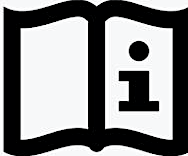GUIDANCE AND RESOURCES
Your gateway to a range of resources and advice on learning and teaching, course design and assessment and more.
The Institutional Effectiveness team is continually populating this section with information and material and would welcome contributions and feedback from NU faculty, please email us.
The NU Learning and Teaching Toolkits are developed to guide and support NU faculty in advancing existing practices and bring innovative learning, teaching, and assessment techniques to the classroom.
The NU Toolkits offer a wide range of instructional materials and resources. Each toolkit focuses on a certain pedagogical or assessment approach. We hope you find them useful.
Our Toolkits:
- NU Learning and Teaching Toolkit #1 Research-Integrated and Inquiry-Based Learning;
- NU Learning and Teaching Toolkit #2 Assessment of Learning Outcomes;
- NU Learning and Teaching Toolkit #3 Course Design;
- NU Learning and Teaching Toolkit #4 Development of Learning Outcomes;
- NU Learning and Teaching Toolkit #5 Calculating Student Workload within the ECTS;
- NU Learning and Teaching Toolkit #6 Effective Feedback Practices.
![]()
NU Guidelines on Calculating Student Course Workload and ECTS Credits

Course Design for Blended and Online Environments (e-publication)
Guidelines on Online Assessment
Approach to Online Course Creation and
Approach to Online Proctoring (professional guidance by Dr. Benjamin Tyler, Associate Professor, SEDS)
NU encourages preventive rather than punitive measures to reduce opportunities for dishonest academic behaviour. Here we share a few tips which faculty may follow in their academic practice:

- Design learning outcomes which encourage students to perform higher order thinking, develop problem solving skills in a specific context and demonstrate their personal learning experience;
- Stage submission of works for formative assessment (assess the process as well as the product) and avoid assessment overload;
- Use tasks that encourage students to integrate, analyse and reflect;
- Use technology for group assignments to track input by individual students (e.g. One Drive);
- Use tasks that are interdependent and build upon each other;
- Write assessment criteria that reward good referencing and citation.
-
How can we align learning outcomes, assessment and teaching?
Click here to explore examples of aligned skills, action verbs, assessment tools and learning and teaching approaches.
Our team will continue adding new toolkits and guides. If you have any suggestions for our future resources, please email us.



